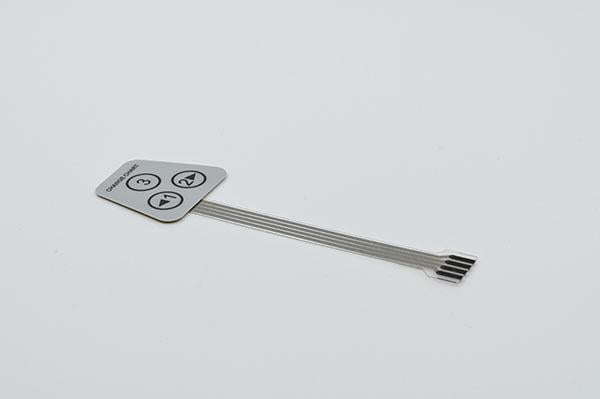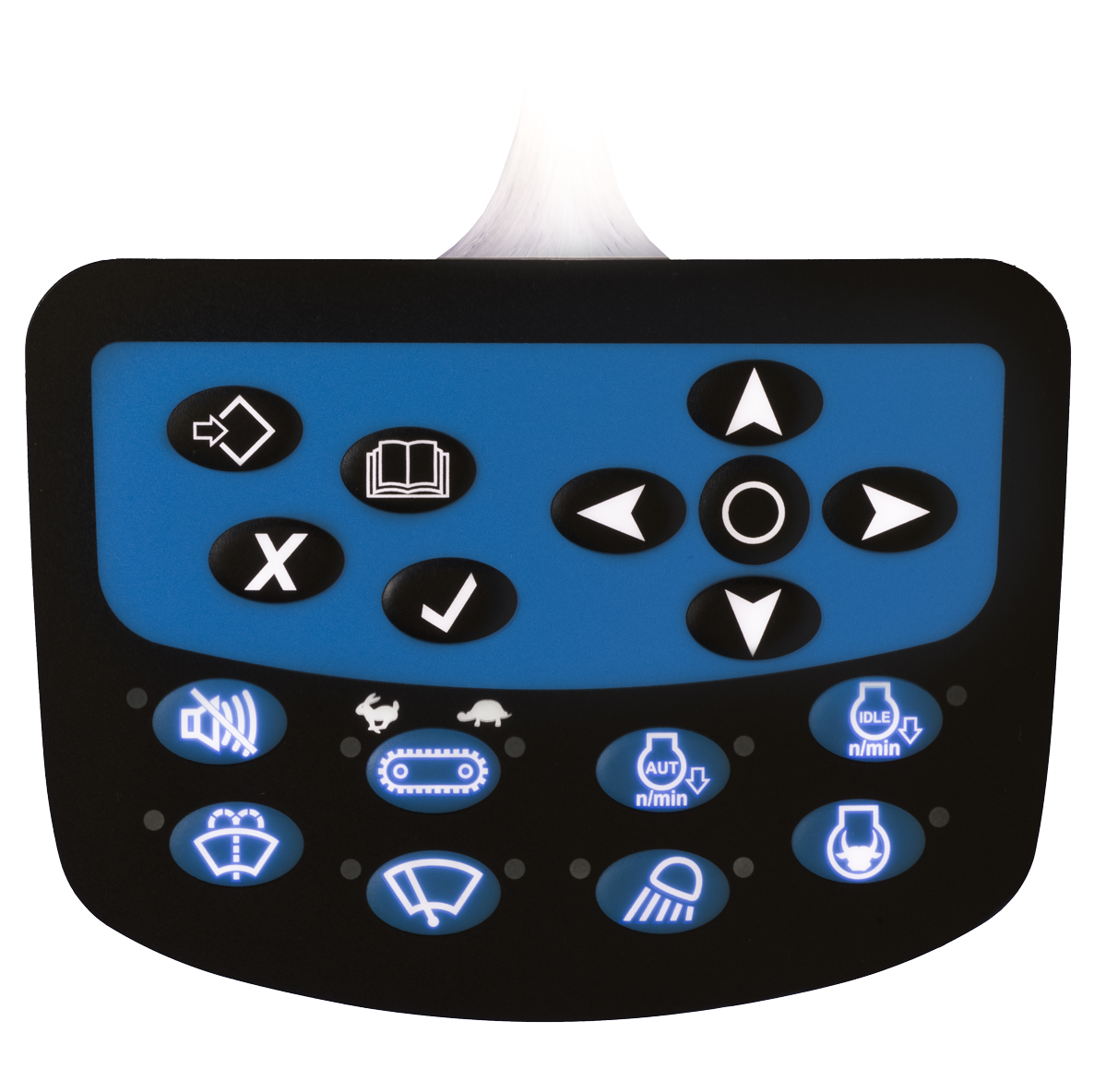An creative membrane switch manufacturer can develop next-gen features and materials.
An creative membrane switch manufacturer can develop next-gen features and materials.
Blog Article
All About Membrane Layer Change: Recognizing Its Layout and Performance
When you think concerning the control interfaces in modern-day devices, membrane buttons typically come to mind. Allow's explore what sets membrane switches over apart from other control systems.
What Are Membrane Buttons?

Their seamless nature makes them easy to clean and resistant to dust and wetness, a crucial attribute in several atmospheres. Membrane layer buttons can also be customized concerning shape, size, and graphics, enabling suppliers to develop one-of-a-kind user interfaces tailored to specific items. And also, they're light-weight and thin, which helps in reducing the general bulk of tools. Overall, membrane buttons play a considerable role in enhancing customer experience throughout a vast variety of applications.
Exactly How Membrane Switches Work
When you push a trick on a membrane layer button, it activates a straightforward yet effective mechanism. The leading layer, frequently constructed from versatile product, presses down onto a conductive layer underneath it. This activity bridges the space in between conductive traces, completing an electric circuit. As quickly as the circuit closes, it sends out a signal to the device's controller, which translates your input.
You'll discover that the responsive responses varies based on the button layout, offering either a soft click or an extra pronounced reaction. As soon as you release the key, the membrane layer go back to its original setting, resuming the circuit and quiting the signal. This procedure occurs virtually instantaneously, guaranteeing a receptive user experience.
Membrane buttons are preferred due to their sturdiness and resistance to dirt and moisture, making them optimal for numerous applications, from family appliances to medical gadgets. Recognizing this procedure helps you value their prevalent usage.
Trick Elements of Membrane Buttons
Recognizing the key elements of membrane layer buttons is fundamental for understanding their performance and style. The protective layer shields versus environmental elements and wear, prolonging the switch's life expectancy. By comprehending these components, you'll obtain insight into just how membrane switches run and their importance in numerous applications.
Products Used in Membrane Layer Switch Over Design
The performance and durability of membrane layer changes greatly rely on the products used in their style. You usually experience polyester and polycarbonate as primary substrates because of their superb toughness and adaptability. These materials resist scrapes and chemicals, making them perfect for demanding atmospheres.
The conductive layers frequently utilize silver or carbon, picked for their dependability and conductivity. membrane switch manufacturer. Silver supplies superior performance, while carbon is an economical alternative. For the overlay, you may take into consideration a matte or glossy surface, depending on your aesthetic needs and user experience
Adhesives play a vital function too; they bond layers securely and guarantee long life. Make sure to choose adhesives that endure environmental aspects like temperature and moisture. Do not overlook the importance of a good printing technique for graphics, as it improves both capability and aesthetic appeal. Selecting the best materials will ensure your membrane layer switch stands the test of time.
Style Factors To Consider for Membrane Layer Buttons
While developing membrane buttons, it's important to take right into account different elements that influence their functionality and user experience. Beginning by concentrating on the format and switch dimension; ensure they're user-friendly and simple to browse. Consider the tactile comments you want to give-- will customers require an obvious click or a softer touch? In addition, consider the products you'll utilize, as they'll affect longevity and looks.
Don't ignore the graphic style; clear labeling and shade contrast are significant for presence. Confirm your layout suits ecological elements, like moisture or temperature variations, which could influence performance. Keep in mind the significance of screening prototypes with genuine users a knockout post to collect responses and make required changes. This repetitive procedure assists you fine-tune the design, validating it meets both useful and aesthetic needs efficiently. By very carefully thinking about these components, you'll produce a membrane switch that enhances functionality and satisfaction.
Applications of Membrane Buttons
Membrane buttons are functional components discovered in various applications, from commercial equipment to consumer electronics. You'll see their impact in makers that require sturdy interfaces and in devices that take advantage of streamlined layouts. Comprehending these applications assists you appreciate the performance and functionality of membrane buttons in day-to-day modern technology.
Industrial Equipment Usage
When you're looking to improve the functionality of industrial tools, membrane buttons supply a reliable remedy that combines resilience with straightforward style. These switches are excellent for harsh environments, providing resistance to dust, moisture, and chemicals. Embrace membrane layer switches to streamline your operations and boost overall performance.
Customer Electronic Devices Integration
In the domain name of customer electronics, membrane layer buttons play a necessary duty in enhancing user communication and tool performance. You'll find them in devices like microwaves, push-button controls, and pc gaming consoles, giving a smooth means to connect with modern technology. Their sleek design enables simple integration into different products, making controls instinctive and straightforward. With their capacity to incorporate graphics and backlighting, you can enjoy a modern-day visual that enhances the tool's overall look. Membrane buttons additionally assure durability and resistance to dust and moisture, expanding the lifespan of your electronics. By choosing membrane switches, you enhance not just the capability yet likewise the design of your devices, making everyday communications smooth and enjoyable.
Benefits and Downsides of Membrane Layer Switches
While membrane switches provide a variety of benefits, they also come with some drawbacks that you must think about. One significant benefit is their small layout, making them excellent for visit here space-constrained applications.

Membrane layer switches can have a shorter life expectancy compared to mechanical switches, particularly under hefty usage. They can also be less tactile, which could impact customer comments during procedure. Stabilizing these pros and cons will certainly assist you identify if membrane switches are the ideal fit for your project.
Regularly Asked Questions
For How Long Do Membrane Changes Typically Last?
Membrane switches normally last between 5 to one decade, depending upon usage and ecological conditions. You'll wish to examine variables like wear, exposure to dampness, and temperature variations to determine their longevity efficiently.
Can Membrane Layer Switches Be Custom-made for Certain Layouts?
Yes, you can personalize membrane layer switches to fit details layouts (membrane switch manufacturer). You'll have the flexibility to choose colors, forms, and formats that match your job's needs, ensuring they mix flawlessly with your overall aesthetic
What Is the Price Range for Membrane Change Manufacturing?
The expense range for membrane switch manufacturing usually falls in between $1 and $10 each, depending on aspects like style intricacy, amount, and materials. You can get quotes from you could try these out manufacturers to discover the most effective option.

Are Membrane Layer Changes Water Resistant or Immune?
Membrane buttons can be made to be water-proof or resistant, relying on products made use of and construction methods. If you require them for wet settings, guarantee you specify those requirements throughout the style procedure.
Just How Do Membrane Switches Over Compare to Typical Buttons?
Membrane layer buttons are typically thinner and more adaptable than standard buttons, offering a streamlined style. They're usually less complicated to clean up and integrate, but may not supply the tactile comments you're made use of to with mechanical alternatives.
Verdict

Report this page